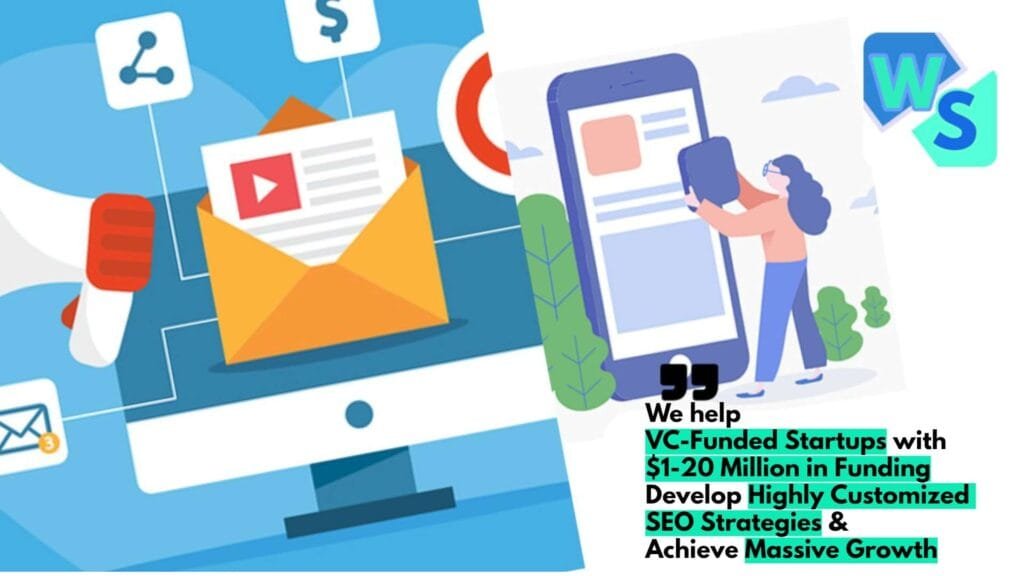In today’s digital era, where an online presence is indispensable, social media advertising has become a pivotal component of business strategies. A decade ago, a brand could achieve a considerable online presence purely based on organic reach. Today, the social media landscape has evolved dramatically. Platforms are crowded, and algorithms prioritize content differently, making paid advertising not just an option but a necessity for visibility.
Understanding the intricacies of social media advertising can make the difference between an ad that goes unnoticed and one that drives meaningful engagement, conversions, and brand loyalty. This guide dives deep into the strategies, techniques, and best practices that drive successful social media campaigns.
The Dynamics of Social Media Advertising
It’s no secret that organic reach on platforms like Facebook has declined over the years. Earlier, a well-crafted post could garner significant attention without any financial investment. Today, due to changing algorithms and increased content saturation, that’s rarely the case. Organic reach is dwindling, with some studies suggesting it’s now below 5% on platforms like Facebook. This shift has made paid promotions essential for brands seeking visibility.
However, this isn’t just a money-grab by platforms. The sheer volume of content shared daily means that without algorithms to prioritize posts, users would be overwhelmed, and the user experience would deteriorate. Hence, while organic strategies still hold importance for brand building and community engagement, paid promotions ensure that your content gets the visibility it deserves.

Understanding the algorithmic nature of social media feeds
Social media algorithms are enigmatic, often leading to confusion and frustration among advertisers. Yet, their primary goal is simple: to enhance the user experience. Platforms prioritize content they believe users will find valuable. This prioritization is based on multiple factors: user engagement (likes, comments, shares), content type (videos, images, text), post recency, and, of course, ad spend.
For advertisers, this means that simply throwing money at an ad won’t guarantee success. The content must resonate with the target audience, encourage interaction, and align with what the platform deems valuable. Understanding these dynamics is the first step in crafting an effective social media advertising strategy.
Navigating the intricacies of social media advertising is akin to mastering a dynamic puzzle. With each platform having its own set of rules, audience preferences, and advertising tools, the challenge lies in creating a strategy that is both flexible and targeted. By setting clear objectives, understanding your audience, and continuously iterating based on performance data, brands can harness the true power of social media advertising.
Setting Clear Objectives for Social Media Advertising
Embarking on any advertising journey without a clear roadmap is akin to setting sail without a compass. It may sound basic, but setting precise, actionable objectives for your social media advertising campaigns is crucial. Not only do objectives provide direction, but they also offer a metric by which success can be measured.
Consider this: A visually stunning ad that garners millions of views but fails to drive conversions might be considered unsuccessful if the primary goal was sales-driven. Conversely, the same ad would be a resounding success if the aim was brand visibility.
Examples of objectives: brand awareness, lead generation, website traffic, and conversions
Let’s delve deeper into these objectives:
- Brand Awareness: Often the first step for new brands or products. The goal here isn’t necessarily immediate sales but making sure people know you exist. Ads focused on brand awareness might be visually striking or emotionally resonant, aiming to leave a lasting impression.
- Lead Generation: For businesses that rely on a sales process, generating leads can be more valuable than immediate sales. Think of B2B companies or high-ticket items where a customer might need more nurturing before making a purchase.
- Website Traffic: This is a broader objective aiming to get users to visit your site. Once they’re there, you can engage them in various ways, from blog content to product pages.
- Conversions: The golden objective for many. Conversion doesn’t just mean sales; it could be sign-ups, downloads, or any action you deem valuable. Ads with this objective need to be persuasive, offering clear value propositions and compelling calls-to-action.
Target Audience Segmentation and Persona Creation
In the vast ocean of social media, broad, unfocused advertising is the fastest way to waste resources. Pinpoint targeting ensures that your advertising efforts resonate with the individuals most likely to engage with your brand. It’s about finding that niche within the vast audience spectrum and tailoring your messages to cater specifically to their interests, needs, and behaviors.
Tactics for demographic, interest-based, and behavioral segmentation
- Demographic Segmentation: This involves segmenting audiences based on attributes such as age, gender, occupation, education, etc. For instance, a brand selling luxury watches might target older, affluent professionals rather than college students.
- Interest-based Segmentation: Platforms like Facebook allow advertisers to target individuals based on their interests. This could range from hobbies, favorite entertainment genres, to even brands they engage with.
- Behavioral Segmentation: This dives into actions users take online. For example, targeting users who’ve recently visited your website but didn’t make a purchase, or those who engage regularly with similar brands.
Crafting audience personas for more personalized ads
While segmentation provides a broad understanding, creating detailed audience personas takes it a step further. A persona is a semi-fictional representation of your ideal customer, including their habits, interests, pain points, and aspirations.
For instance, ‘Tech-savvy Tim’ might represent a segment of your audience that loves the latest gadgets, reads tech blogs, and values efficiency. Designing ads that cater specifically to Tim’s interests and pain points will likely yield a better engagement rate than a generic tech ad.
Platform-Specific Advertising Strategies
In the dynamic ecosystem of social media, each platform offers distinct advertising avenues tailored to its user base and content format. To master the art of social media advertising, understanding these nuances is paramount. Here’s a closer look at the advertising strategies pertinent to each major platform:

Facebook Advertising Strategies
Carousel Ads
These ads allow brands to showcase up to ten images or videos within a single ad, each with its own link. It’s a fantastic tool for highlighting different products, sharing multiple facets of one product, or narrating a brand story in sequence.
Stories Ads
Leveraging the full-screen format, Stories Ads offer immersive, short-lived content opportunities. With the majority of Facebook users engaging with Stories daily, this format provides a fresh, engaging way to connect with audiences without cluttering their news feeds.
Lookalike Audiences
One of Facebook’s strongest advertising tools, Lookalike Audiences allow businesses to reach users similar to their existing customer base. By analyzing the traits and behaviors of your current audience, Facebook identifies and targets individuals with congruent profiles, increasing the probability of conversion.

Instagram Advertising Strategies
Carousel Ads
Much like its parent platform, Facebook, Instagram’s Carousel Ads allow showcasing of multiple images or videos in a scrollable format. It’s particularly effective given Instagram’s visual-centric nature, allowing brands to craft compelling visual narratives.
Stories Ads
Making the most of the ephemeral content trend, Instagram Stories Ads offer businesses the chance to place full-screen ads between user stories. Given the platform’s visual inclination, compelling imagery coupled with concise messaging can yield impressive engagement rates.
Lookalike Audiences
Harnessing the data prowess of Facebook, Instagram also offers the Lookalike Audience feature, allowing advertisers to target a new segment that mirrors their existing audience in terms of behaviors, interests, and demographics.

Twitter Advertising Strategies
Promoted Tweets
These are regular tweets but with a little boost. Promoted tweets appear in targeted users’ timelines and can help increase visibility, drive engagement, or attract new followers.
Keyword Targeting
This strategy lets advertisers reach Twitter users based on the keywords they’ve used in their tweets or engaged with recently. It’s a direct way to tap into real-time interests and conversations.
Twitter Cards
A multimedia addition to the 280-character limit, Twitter Cards let brands attach rich media like photos, videos, or website previews. It enhances the user experience by offering more engaging content without leaving the platform.

LinkedIn Ads: What to make the best of it?
Sponsored Content
Appearing directly in the LinkedIn feed, Sponsored Content promotes your brand content to reach a wider, yet targeted audience. Given LinkedIn’s professional orientation, this strategy is pivotal for B2B marketers.
InMail Campaigns
A more personalized approach, InMail campaigns involve sending direct messages to targeted individuals on LinkedIn. It’s a unique way to bypass the noise of the feed and engage users in one-on-one conversations.
Display Ads
These are visual ads that appear on the side or bottom of the LinkedIn interface. While they’re less intrusive, crafting compelling visuals and CTAs is essential to capture users’ attention.

Pinterest Ads: What separates them?
Promoted Pins
Acting like regular pins, but with a boost, Promoted Pins can be seen by a wider audience. They’re beneficial for driving brand awareness and traffic, especially for e-commerce and lifestyle brands.
Shopping Ads
These are dynamic product pins that allow users to make a purchase directly from Pinterest. It’s a seamless integration of browsing and shopping, making the user journey more fluid.

Snapchat Ads: A Brief Look
Snap Ads
These are full-screen vertical video ads that appear between stories. Given their brief nature, the key is to make an impact in the initial seconds to engage users effectively.
Filters and Lenses
An interactive and fun approach, Filters and Lenses let users augment their snaps. Brands can create custom filters or lenses for specific events, promotions, or general brand awareness.
Crafting Engaging Ad Creatives
In the vast ocean of social media, the brands that stand out do so because they’ve mastered the art of captivating creatives. The essence of any ad is its content, and crafting an ad that engages is both science and art.
Visual Storytelling and Its Importance
Our brains are wired to process visuals faster than text, and stories have always been a cornerstone of human communication. Visual storytelling merges these truths, creating a potent means to capture attention and evoke emotions. It’s not just about pretty pictures; it’s about conveying your brand’s narrative in a way that resonates. In the split-second decision of a user to engage or scroll past, a compelling visual story can make all the difference.
Tips for Creating Compelling Visuals and Catchy Headlines
- Authenticity Matters: Users can spot stock photos a mile away. Aim for original, high-quality images that represent your brand’s genuine essence.
- Harness Emotion: Colors, compositions, and subjects can evoke specific feelings. Tailor these elements to align with your message.
- Headlines That Hook: Your headline should be a perfect blend of intrigue and information. Make it crisp, relevant, and always aligned with the visual.
The Role of CTAs and Ensuring Clarity and Action
A Call to Action (CTA) is your ad’s crescendo, guiding the user on what to do next. It’s vital to be clear and specific. Whether you want them to “Learn More”, “Shop Now”, or “Sign Up”, your CTA should be unmistakable. A well-crafted CTA not only increases click-through rates but also sets clear expectations, reducing bounce rates on the landing page.
In essence, an ad creative isn’t just about aesthetics; it’s a strategic tool that, when used wisely, can yield remarkable results.
Budget Allocation and Bidding Strategies
Every platform offers a unique value proposition and audience demographic. Depending on your target audience and campaign objectives, you need to allocate budget judiciously across platforms. Startups might prioritize Facebook and Instagram for community building, while B2B enterprises might invest more heavily in LinkedIn.
Understanding bidding options: CPC, CPM, and CPA
- CPC (Cost Per Click): You’re billed every time someone clicks on your ad. Suitable for driving specific actions like website visits.
- CPM (Cost Per Mille/Thousand): Here, you pay for impressions. It’s about visibility and brand awareness.
- CPA (Cost Per Acquisition): The most results-oriented, you pay when the ad achieves its goal, be it a sale, sign-up, or app install.
Tactics to maximize ROI with smart budgeting
- Start Small: Especially if you’re new, start with a limited budget, analyze the results, and then scale.
- Optimize for Ad Schedule: Run your ads when your target audience is most active.
- Geo-targeting: Especially for local businesses, targeting by location can provide higher ROI.

Utilizing Retargeting and Remarketing Strategies
Retargeting is a form of online advertising that can help you keep your brand in front of bounced traffic after they leave your website. For most websites, only 2% of web traffic converts on the first visit. Retargeting is a tool designed to help businesses reach the 98% of users who don’t convert right away. Essentially, it’s a strategy to reconnect with potential customers who showed initial interest.
Strategies for effective retargeting campaigns
- Segmentation: Not all your visitors have the same intent. Segment your audience based on their interaction with your site. For instance, target cart abandoners with a different ad compared to blog readers.
- Frequency Caps: Overexposing users to your ads can be counterproductive. Limit the number of times a person sees your ad to avoid ad fatigue.
- Burn Pixels: These ensure that users who’ve converted are no longer targeted. It prevents wastage of ad spend and avoids annoying users.
Best practices for creating retargeting ads
- Personalize the Message: The more tailored an ad is to a user’s previous interaction, the better it performs.
- Offer Incentives: A small discount or free shipping can often nudge hesitant shoppers to convert.
- Test Ad Creatives: Use A/B testing to find out which ad designs and messages resonate the most with your audience.
A/B Testing and Ad Optimization
In the dynamic realm of social media advertising, intuition alone isn’t sufficient. Data-driven insights, culled from diligent testing, are the linchpins of successful ad campaigns. A/B testing, often called split testing, is an indispensable tool for marketers striving to fine-tune their messages and visuals for optimal performance.
Importance of Continuous Testing
The digital ad space is ever-evolving. User behaviors shift, platform algorithms change, and industry trends oscillate. In this volatile landscape, resting on the laurels of a past successful ad can lead to stagnation. Continuous A/B testing ensures your ads remain relevant, engaging, and effective. By routinely testing, you can stay ahead of curve, iterating based on real user responses.
Tactics for Effective A/B Testing
- Single Variable Testing: When comparing Version A to Version B, alter just one element at a time, be it the image, headline, or CTA. This ensures clarity about what’s driving different results.
- Statistical Significance: Ensure your test results aren’t mere flukes. Use adequate sample sizes and run tests long enough to gather significant data.
- Diverse Audiences: Rotate your tests across different audience segments to gather comprehensive insights.
Analyzing Results and Implementing Changes
After running the test, it’s crucial to dive deep into the results. Look beyond the obvious metrics like click-through rates. Analyze user engagement, time spent on the landing page, and conversion rates. But data is just the start. The real magic happens when these insights are used to refine and recalibrate your ads. Regularly update your campaigns based on A/B test findings to optimize performance and ROI.
Integrating User-Generated Content (UGC) in Ads
User-Generated Content (UGC) has emerged as an indispensable element in the social media advertising ecosystem. Today’s consumers view UGC as more authentic and relatable than branded content, making it a powerful tool for enhancing ad campaigns.
The Growing Trust in UGC and Its Influence
In today’s digital age, consumers have become adept at distinguishing between genuine content and marketing ploys. Traditional advertisements, no matter how well-crafted, often fail to resonate as they once did. Enter UGC – the organic testimonials, reviews, and content created by your users. A study by Stackla found that 79% of people say UGC highly impacts their purchasing decisions, significantly more than brand-created content. Why? Because UGC is seen as unfiltered, genuine, and a testament to the actual value and quality of a product or service.
Strategies to Encourage UGC Creation
To leverage the power of UGC, you must first have a reservoir to tap into. Here’s how you can stimulate its creation:
- Engage with Your Audience: Actively communicate with your users. When they post about your brand, acknowledge and appreciate it. This creates a positive feedback loop and encourages others to share.
- Host Contests and Giveaways: Encourage users to post pictures, reviews, or testimonials with a specific hashtag for a chance to win something. Not only does this generate UGC, but it also boosts brand visibility.
- Create Shareable Products or Experiences: If users find value or delight in your product or its packaging, they’re more likely to share their experience. Think of unique, Instagrammable moments that your brand can offer.
Best Practices for Incorporating UGC in Ad Campaigns
Harnessing UGC is one thing; using it effectively in your campaigns is another:
- Seek Permission: Before using any user-generated content, especially in a paid campaign, always ask for the creator’s consent. This not only avoids potential legal pitfalls but also fosters goodwill.
- Highlight Real Stories: Instead of just using user images or videos, narrate their stories. It adds depth and creates a stronger emotional connection.
- Use UGC in Retargeting Campaigns: Users who’ve engaged with your brand but haven’t converted can be nudged effectively with UGC. Seeing real people endorse your product can be the push they need.
Incorporating UGC into your advertising strategy not only boosts your campaign’s credibility but also strengthens the bond with your audience. In an age where trust is paramount, UGC stands as a beacon of authenticity.
Video Advertising: Tactics and Best Practices
The current digital landscape has observed a massive surge in video content consumption. According to reports, videos are projected to claim more than 80% of all web traffic by 2023. Social media platforms, understanding this trend, have embedded features that prioritize video content, further amplifying its importance in the advertising domain.
Tips for creating engaging video ads
- Short and Sweet: With dwindling attention spans, it’s vital that your message is conveyed quickly. Aim for 15-second ads, especially for platforms like Instagram and Snapchat.
- Narrative Arc: Even in a short video, there should be a clear beginning, middle, and end. This ensures viewers are engaged and understand the message.
- Optimize for Silent Playback: Many users browse without sound, especially on mobile. Ensure your video communicates effectively even when muted, using subtitles or clear visual cues.
Platform-specific considerations for video advertising
Different platforms cater to different audiences and have distinct best practices.
- Facebook: Use attention-grabbing thumbnails and put your key message in the first few seconds.
- Instagram: Leverage Stories for time-sensitive promotions and IGTV for longer, more in-depth content.
- LinkedIn: This platform appreciates more professional, polished videos. Consider explainer videos or company showcases.
- Snapchat: Fun, fast-paced, and quirky works best here. Ensure your call-to-action is clear since the content is ephemeral.
Monitoring, Analytics, and Performance Metrics
Venturing into the realm of social media advertising without a compass, in the form of robust monitoring and analytics, can leave businesses wandering aimlessly. It’s not just about launching campaigns, but also about understanding their performance to refine and optimize for the future.
Key Metrics to Track
- Engagement Rate: This metric provides insights into how your content resonates with your audience. It encompasses likes, shares, comments, and other interactions that indicate your content’s effectiveness.
- Click-Through Rate (CTR): A pivotal metric that reveals the percentage of users who clicked on your ad out of the total who saw it. A high CTR often signifies compelling ad creatives and relevance to the target audience.
- Conversion Rate: Beyond just clicks, what actions are users taking? This metric delves into how many clicked-through users actually performed the desired action, be it a purchase, sign-up, or download.
Utilizing Platform-Specific Analytics Tools
Every social media platform offers its analytics suite, tailored to its unique ecosystem. Tools like Facebook Insights, Twitter Analytics, and LinkedIn Analytics provide invaluable data about your audience demographics, ad performance, and more. Leveraging these tools can help you discern platform-specific nuances and adjust your campaigns accordingly.
Continuous Monitoring for Campaign Optimization
The digital landscape is ever-shifting. What worked yesterday might not be as effective today. Thus, it’s vital to maintain a persistent vigil on your campaign metrics. Regularly analyze the data, discern patterns, and promptly iterate based on these insights. This continuous cycle of monitoring, learning, and refining is the cornerstone of a successful and agile social media advertising strategy.
The Role of Influencers in Social Media Advertising
Influencer marketing isn’t just about celebrity endorsements. It revolves around leveraging individuals who have a genuine following, and whose audience trusts their opinions and recommendations.
Strategies for influencer ad campaigns
- Align with Relevant Influencers: An influencer relevant to your industry or niche will always garner better results than one with a more significant but less relevant following.
- Co-create Content: Instead of handing them a script, co-create. It ensures authenticity and a higher probability of audience engagement.
- Multi-Platform Engagements: Utilize the influencer’s presence across various platforms for more extensive reach.
Selecting the right influencer for your brand
- Engagement Rates: A smaller following with high engagement can often be more valuable than a large, disengaged audience.
- Audience Demographics: Ensure the influencer’s audience aligns with your target market.
- Content Quality: Their content’s tone, style, and quality should align with your brand’s values and image.
Overcoming Challenges in Social Media Advertising
In any burgeoning field, there are always hurdles to overcome. Social media advertising is no exception. Here’s how you can navigate these waters.
Navigating ad-blockers and “banner blindness.”
- Ad-blockers have become increasingly popular among users, especially millennials, who find ads disruptive. This can severely limit the reach of your campaigns.
- Banner blindness is another issue, where users have become so accustomed to ads that they subconsciously ignore them, regardless of their content or placement.
Tactics to Overcome:
- Native Advertising: Integrate ads seamlessly into the user’s browsing experience. When ads don’t feel like ads, they’re less likely to be blocked or ignored.
- Engaging Content: Users are more likely to whitelist sites or disable ad-blockers for content they find genuinely engaging and useful.
- Interactive Ads: Use interactive elements to make users more likely to engage.
Handling negative feedback and crisis management
Social media is a double-edged sword. While it allows brands to connect directly with their audiences, it also provides users a platform to air grievances.
Strategies for Effective Management:
- Quick Response: Address concerns as soon as they arise. A prompt, genuine response can mitigate potential damage.
- Stay Professional: Always maintain a calm, professional tone, even when faced with aggressive or negative feedback.
- Plan Ahead: Have a crisis management plan in place, so if things do go awry, you’re prepared.
Ensuring ad transparency and ethical considerations
With growing concerns over data privacy and misleading advertising, transparency has become paramount.
Best Practices:
- Clear Messaging: Ensure that all ads are clear about who they’re from and what they’re promoting.
- Data Privacy: Always be transparent about how you’re using data and give users an easy way to opt out.
- Ethical Considerations: Be mindful of cultural, racial, and gender sensitivities. Strive for inclusivity and avoid potential pitfalls by staying informed.
Wrapping it up
Navigating the social media advertising landscape might seem daunting with its ever-evolving algorithms, platform-specific nuances, and the challenges posed by ad-blockers and data privacy concerns. However, with clear objectives, a deep understanding of your audience, creative strategies, and the right tools at your disposal, you can harness its vast potential.
Remember, it’s not just about reaching the masses; it’s about reaching the right people, with the right message, at the right time. As we’ve dived deep into the tactics and strategies of social media advertising, it’s clear that while challenges exist, so do vast opportunities. It’s a dynamic world out there, and with the insights from this guide, you’re now better equipped to make waves.
Read Next:





















